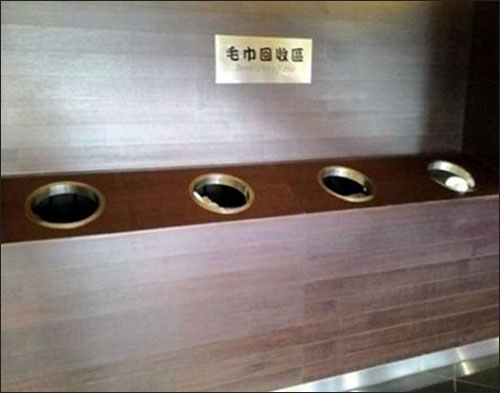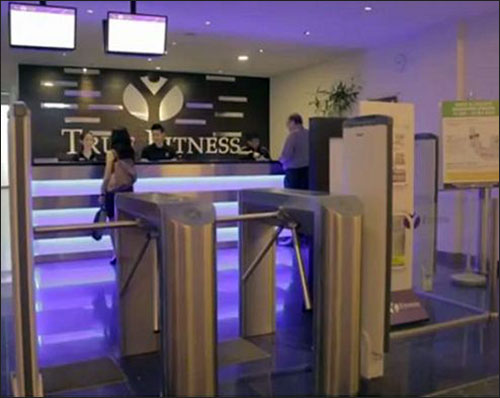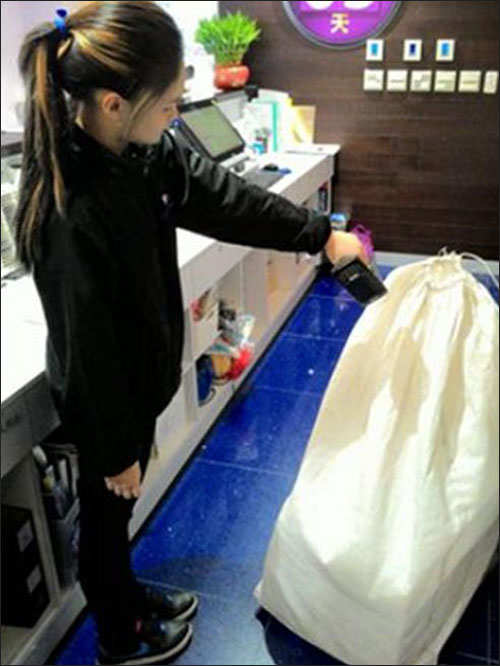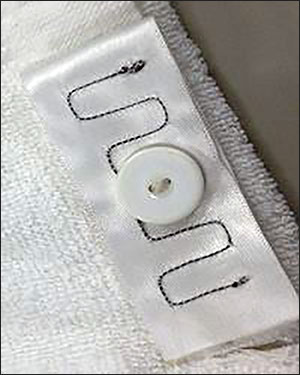Fitness gym True Group, an international health-club company based in Singapore, has begun a five-year rollout of radio frequency identification technology at all of its clubs to manage its towels. The solution, provided by EPC Solutions Taiwan, was taken live in October 2014 at the newest True Yoga facility in Chung-Ho Taiwan, and the company plans to install the technology at its other clubs as well, beginning next month, at a rate of one center going live every three months.

True Group operates approximately 35 health clubs, primarily under its True Yoga and True Fitness brands, and has a total of 200,000 members in five countries: Singapore, Malaysia, Taiwan, Thailand and China. One costly responsibility that the company faces is managing the towels used by those members. Each club loans its towels to members, who are expected to leave the wet towels behind when they leave. At that point, the towels are laundered offsite, and are then returned and made available to other patrons. True Group found that many of its towels were lost, presumably because members were taking them home.
The company installed an electronic article surveillance (EAS) system within each of its clubs that sounds an alarm if a member attempts to leave while in possession of a towel belonging to the club. The system worked fine, says T.H. Liu, EPC Solutions’ president, though it provided only an alert, and not the ID number of the specific towel being removed, nor the member’s identity. Consequently, True Group could not follow up with the individual who took that towel, to remind him or her to return it.
Another challenge the club wanted to overcome was the sheer volume of labor involved in counting towels as they were transported to the laundry vendor, and again once they returned. The company decided that an RFID system could reduce labor costs, as well as identify towels being removed from each club, and thereby enable personnel to contact the individuals who removed those towels.
EPC Solutions provided its L30 ultrahigh-frequency (UHF) laundry tag, which was sewn into the edge of each towel used at the Taiwan facility. Each ID number encoded in the tag is unique and indicates that specific towel. EPC Solutions then installed an Alien Technology ALR-9900+ UHF reader in the club’s lobby, with two antennas flanking the turnstiles through which members must pass when entering or exiting the facility. In addition, EPC Solutions installed an Alien ALR-9650 fixed reader at the box in which used towels are placed.

Upon arriving at the facility, a member first presents his mag-stripe member card to the receptionist. She swipes the card to collect that individual’s ID number, then lends him two towels and uses an EPC Solutions SME-101 desktop reader to interrogate the towel tag IDs, thereby linking that member to those towels in the software.
Once finished with his workout, the member throws the wet towels into the 55- by 39-inch return box. The reader built into the box interrogates the tag IDs and updates the software to indicate that those towels have been returned. To accomplish this, EPC Solutions wired the reader to the company’s Flexant cable antennas circling each of the box’s four towel “drop holes.”
When the number of towels returned reaches 200, the EPC Solutions software sends a text message to the appropriate employee, indicating that the box has reached its maximum capacity. While emptying the box, the worker also updates the software to indicate that it is now empty.
If, a member forgets to return towels and walks through the gate to exit the building, the reader will capture those towels’ ID numbers, trigger an audible alarm and issue an alert to the software, indicating which towels are leaving the premises. Since the towels are linked to that specific individual in the software, the company can contact him as well.
Once the wet towels retrieved from the used towel box have accumulated and are ready to be laundered, staff members use an Atid AT880 handheld to read the towels’ tags as the laundry vendor picks them up to bring them to its own facility for washing. When the vendor returns the cleaned towels, True Yoga’s staff again read the tags to confirm delivery and verify that none are missing. While the manual process to verify the quantity of towels shipped and received took about a half-hour to complete, the company reports, the RFID-enabled process takes only three minutes.

Patrick Wee, True Group’s CEO, says one of the technology’s primary benefits will be in providing proof that a specific number of towels went to the laundry vendor and were later returned. “The most important thing,” he notes, “is to eliminate arguments between our employees and the laundry vendor.”
In addition, the solution reduces the rate of shrinkage, because patrons are more diligent about returning towels to the used-towel bin since the system monitors the returning process. The company can also use the software to ensure that towels do not run out or to keep track of those being laundered.
Based on this solution, EPC Solutions is now developing an automatic towel-dispensing machine that could be used by health clubs, hotels, swimming pools or other companies that loan towels to customers. The machine, which contains a built-in RFID reader, would also track what is returned, and when, as well as issue alerts when the machine is full of used towels, or requires replenishment of clean ones. The company plans to release a prototype of the machine by April 2015.



